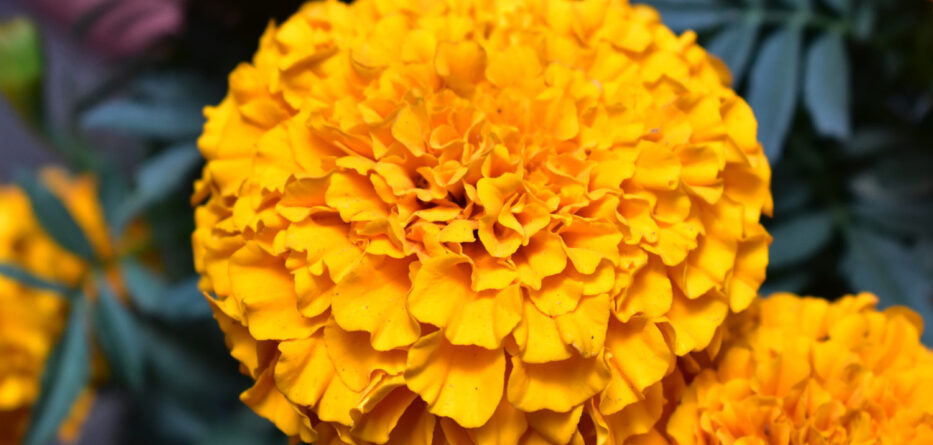Mexico City – Every year at the Day of the Dead celebration, the yellow of marigolds is said to guide the spirits of the dead in Mexico so that they can reunite with their living relatives. For years, the flower has also attracted the living, since from it is made a type of “pulque” beverage exclusive to the season.
In the southern part of Mexico City, behind the bar at the El Templo de Diana pulque establishment, the iconic spot for the fermented alcoholic drink, manager Ulises Rosas might be confused with a florist who spends most of his time cutting the stems of the flowers with a smile.
“First, we select the flower, which must be fresh. You clean the flower and cut it in a special way because not all the flower is used,” he told EFE on Thursday, showing how he prepares a stem when what he’s really doing is revealing the first part of the recipe for marigold pulque.
Once the petals have been put into the blender, Rosas adds a little bit of pulque and a “secret recipe” to tickle the palates of his customers with this new way of making the traditional Mexican drink.
Pulque is a pre-Hispanic drink made with agave, consumed mainly in central and southern Mexico and with an alcohol content that ranges from 4 percent to 6 percent.
A glance at the tables in his establishment is enough to understand the success of the special Day of the Dead recipe: not a single table and not a single customer is without at least one jar of orange pulque. This is the color that predominates here from the entrance to the jukebox in back.
The customers “ask for it a lot. Since the flower begins to bloom in early October and lasts until the beginning of December. That whole season most of the people who come here do so only for the marigold pulque,” Rosas said.
Traditionally, marigolds have been placed on the altars to the dead that every family and every nightspot sets up to remember the dead during the Nov. 1-2 Day of the Dead celebrations in the hope that they will return to this world temporarily and spend an enjoyable time with their living friends and loved ones once again.
That’s where the idea for the new drink arose, Rosas said, explaining that “about 16 years” ago people started “experimenting” with elements on the altars like fruits and flowers to create a new recipe for the traditional drink. The innovations bore fruit and led to a pulque that unites both the living and the dead.
“Now (marigolds) are no longer just something for the dead, but they also attract the living. We give them our taste so that we can coexist with our dead and our ancestors,” Rosas said.
One of those attracted by the marigold pulque is Julio, in his 20s, who said he was “curious” when he heard about the new mixture and decided to come to El Templo de Diana with his friend Luis to try it out.
“It’s huge because it’s seasonal. It’s not something that you can have all year. And now that I’ve tried it for the first time, I think that it’s very cool that during this period you can enjoy this type of recipe,” he said, his pulque jar empty.
The two friends agreed that this is the first, but not the last, time that they will drink marigold pulque. “It met my expectations completely. It’s really good,” said Julio, who has already set up his own altar to his dead ancestors at his home.
“You can mix (traditions), if and when you don’t lose the true essence,” he said.
New ways to remember the dead, something that is deeply rooted in Mexican culture, are flourishing this year in particular, amid the Covid-19 pandemic that has infected almost 910,000 people in Mexico and killed more than 90,000, and which has resulted in most of the cemeteries remaining closed for the Day of the Dead celebration.






